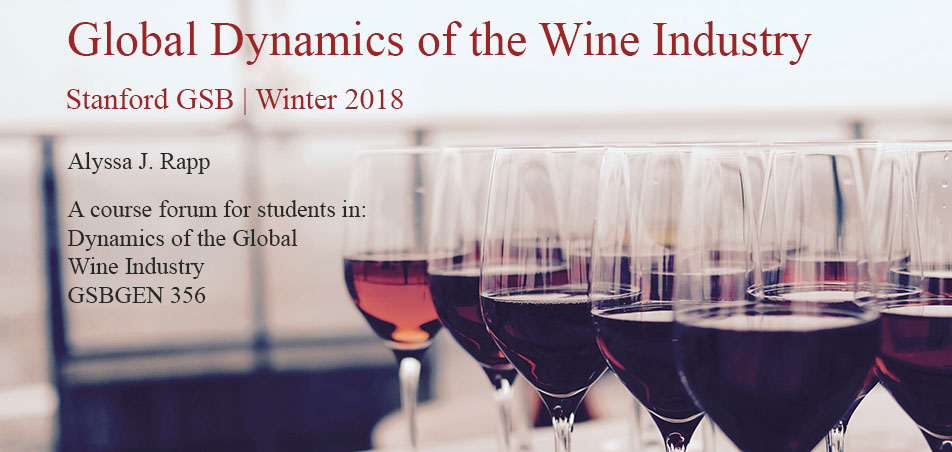An overlook of the Douro River in Porto, Portugal.
Last class's discussion of Portugal's idiosyncratic wine export market gave me reason to reflect on my 2016 vacation to Porto and the Douro Valley. I chose this region as the final stop on a wandering Iberian road-trip (also the trip during which I decided to apply to the GSB... coincidence?). I liked port wines, but I did not expect to be so thoroughly charmed by the history and geography of the area, which seemed fully devoted to its namesake libation.
I had no idea until visiting, but port wine's development spans two regions. It is grown, pressed, and barreled in the Douro Valley, and then sent down the Douro River to Vila Nova de Gaia (the town on the other side of the river from Porto) for aging. Historically, the barrels were sent in these quirky flat-bottomed boats called "barcos rabelos," (see below) although nowadays the boats are just for show and the wine is trucked. The rationale for this geographic shift is that the climate in the river valley is preferable for growing, but the cooler temperatures in the city near the coast are preferable for aging. It's a marvelously natural solution to climate control from centuries ago.
The tasting rooms in the city all offer tours amongst the barrels and other touristy charms (I definitely splurged on a live barrel-adjacent fado performance, Portugal's mournful vocal tradition, in exchange for some so-so wine, but anyone who has ridden the gondolas at Sterling in Napa can sympathize). Porto is a gorgeous and well-preserved historic city, but the real stunner is the Douro river valley itself (it's also a UNESCO world heritage region), where every inch of hillside is cultivated with vines, and the slopes spill right into the winding river.
Another layer of confusion for me was identifying which grapes went to which bottles. All of the quintas (or vineyards) contribute to a variety of port blends, with the winemakers tasting to ensure that the taste of Dow's or Graham's remains consistent year over year, rather than highlighting the idiosyncratic flavors of various vintages. As a plus, it was one of the only wine tours I've been on where the guide invited us to pick and taste grapes right off the vines! I do not see that happening anytime soon in California...
There is literally oodles more history and detail, but I'll leave that to our academic pursuits. I encourage all of you to add Porto and Douro to your travel lists. You won't regret it!
The barcos rabelos parked along the shore of Vila Nova de Gaia, with Porto in the background.
The rooftops of the tasting rooms and barrel houses of Vila Nova da Gaia, with Porto in the background.
A fado performance in the Calem barrel house in Vila Nova de Gaia.
A scenic first glimpse of the Douro River Valley on the drive over from Porto.
A look at the Douro River from the village of Pinhão.
Panning slightly to the left...
A scenic tasting at Quinta do Bomfim in Douro, who primarily supplies Dow's.








No comments:
Post a Comment